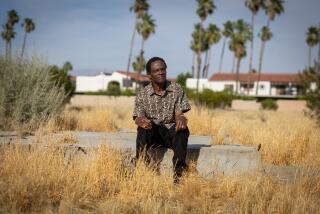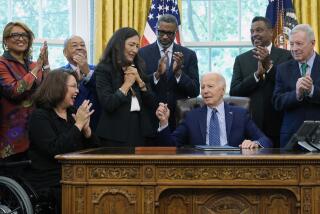Panel Urges Reparations for Deadly 1921 Race Riot
TULSA, Okla. — A state commission recommended Friday that reparations be paid for one of the nation’s deadliest racial clashes: a little-known 1921 rampage by a white Tulsa mob that killed as many as 300 people, most of them black.
The 11-member panel called for direct payments to survivors and victims’ descendants, scholarships and a tax checkoff program to fund economic development in Tulsa’s mostly black Greenwood area and a memorial to the dead.
“I asked myself, ‘What would I want if my life was basically destroyed?’ ” commission member Vivian Clark said in favor of payments to survivors. “The country has a problem as a whole in giving compensations to African Americans.”
The commission recommended that the direct payments be a priority.
The panel gave no specifics on how much the package would cost and offered no details on such things as who would get the scholarships. It also didn’t say who should make the payments.
“We haven’t pointed fingers at anyone, yet,” said commission chairman Bob Blackburn, who is white.
But the commission passed a resolution that said the racial hatred then was tolerated through laws of local, state and federal governments and said restitution would be good public policy and help repair the emotional and physical scars of the riot.
The commission’s recommendation is subject to approval by the state Legislature.
Genevieve Elizabeth Tillman Jackson, an 84-year-old black woman who survived the riot, said after the vote that she never thought she would see the day.
“It’s great. I think the survivors should be helped, and the children of survivors,” she said.
About a half-dozen of the 80 known riot survivors watched Friday as the commission heard personal accounts, sifted through newspaper stories and a subcommittee recommendation before approving the payment of reparations.
Ten of the 11 members voted in favor of the memorial and the scholarships after one commissioner left the meeting early. The vote was 9 to 1 on the direct payments and the tax checkoff.
“I have big problems with reparations. Will it solve what we’re looking at?” asked state Sen. Robert Milacek, a white commission member. He cast votes in favor of scholarships and a memorial but went against direct payments.
No cheers of joy or even clapping met the vote. Most of the survivors there had a hard time hearing. Friends and family members whispered the results into their ears, the quiet words bringing looks of contentment to their faces. Their eyes were watering.
The survivors left quickly after the vote while the commission continued their meeting.
The riot broke out May 31, 1921, when a white lynch mob clashed with blacks who were protecting a black man accused of assaulting a white elevator operator.
Over two days, white mobs set fire to homes, businesses and churches in Greenwood, a thriving black business district known at the time as the Black Wall Street of America. When the smoke cleared, the area lay in ruins.
Many blacks left and never returned. The National Guard rounded up thousands of others and held them at the fairgrounds, convention hall and a baseball stadium.
The commission, which included a survivor, historians, lawmakers and community members, held meetings for two years and agreed that it may be impossible to get a complete, accurate account of what happened.
For decades, the city ignored the riot. It was only in 1996 that it recognized its anniversary. The next year, the state Legislature created the commission when Tulsa lawmakers raised the issue of restitution.
More to Read
Sign up for Essential California
The most important California stories and recommendations in your inbox every morning.
You may occasionally receive promotional content from the Los Angeles Times.










